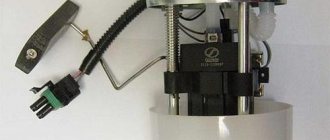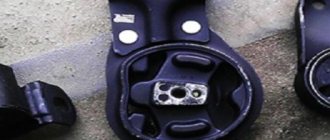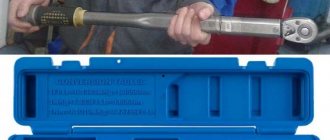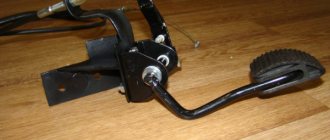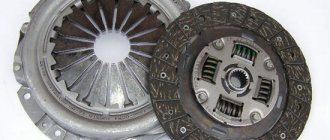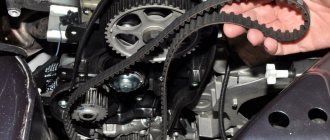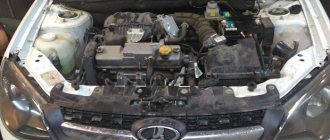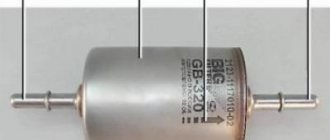Any experienced car enthusiast knows how important the gas distribution system, abbreviated as timing, is in a car. Its task is to supply air to the cylinders, where a working mixture is created to start and operate the engine. After the mixture burns out, exhaust gases are formed, which must be removed from the system, and here the timing belt also plays a decisive role.
For the correct operation of the timing belt, reliable operation of the hydraulic compensators is important. These devices are responsible for opening and closing the air intake valves. Moreover, they are responsible for opening the valves to a strictly defined amount, no more and no less.
If the hydraulic compensators break down, the gap size will be disrupted, which will lead to a phase failure of the gas distribution system. A car enthusiast can detect a problem by a characteristic knocking sound, which often causes panic even for experienced drivers. Today we’ll talk about how hydraulic compensators are replaced on a Priora with a 1.6 engine with 16 valves with or without air conditioning.
Malfunctions and their causes
As mentioned above, the design of hydraulic compensators is extremely simple. But even such simple parts fail. There are three main signs that indicate that something is wrong with the hydraulic compensators:
- While the engine is running, a quick knocking noise is clearly audible.
- Engine power drops significantly, especially at high speeds.
- The engine runs rough, even at idle.
If any of these signs are observed, then it’s time to change the hydraulic compensators. The main problem with these parts is that they are extremely sensitive to the quality of the engine oil. Sometimes it doesn’t even get to the point of replacing hydraulic compensators. The car owner simply drains the old oil, fills in new oil (after flushing the engine) and the knocking disappears. If the problem does not go away, it means that there is mechanical wear of the hydraulic compensators (usually this occurs due to the so-called metal fatigue).
We recommend: The best ways to replace fine and coarse fuel filters on a VAZ 2109/2114/2115
What malfunctions most often occur with hydraulic compensators?
If you drove earlier VAZ models, then you remember the unpleasant knocking sound that signaled a problem in the engine valve system. In model 2112, the engine uses the same extraneous noise to notify the owner about a malfunction of the hydraulic compensators. Typically, their failure occurs for the following reasons:
- development of their resource;
- engine wear products getting inside the pushers;
- untimely oil change, which led to clogging of its supply channels.
If replacement of hydraulic pushers was necessary at the end of their service life, then this is direct evidence that the car owner pays sufficient attention to engine care. First of all, VAZ-2112 owners need to:
- observe oil change intervals;
- do not fill the engine with low-quality lubricating fluid;
- monitor the serviceability of oil systems;
- Check the oil level regularly.
For ideal operation, the hydraulic tappet must be completely immersed in oil. This will reduce the dynamic load on this engine element and prevent its failure. An insufficient amount of lubricant leads to the fact that the hydraulic pushers are gradually destroyed and their replacement becomes necessary.
The process of replacing hydraulic compensators on a 16-valve valve
Hydraulic compensators produced by AvtoVAZ
So, if the diagnostics showed that the hydraulic compensators are out of order, then we replace them. Of course, first of all, you need to buy new ones. Now, consider the sequential replacement process:
- We dismantle the upper protective cover.
Fastening bolts are marked with an arrow
- We remove the receiver.
Removing the receiver from the car
- Now, it is necessary to dismantle the ignition module.
We unscrew the fastenings and dismantle the ignition model
- Disconnect the crankcase ventilation hose.
Unscrew the clamp and remove the crankcase ventilation hose
- Using a 10mm wrench, we dismantle the injector wiring harness bracket.
Using a wrench, unscrew the fastenings of the wiring harness.
- We dismantle the valve cover.
Removing the valve cover
- Now, you need to carry out diagnostics and press on the drifts.
The principle of operation and diagnostics of hydraulic compensators
- Next, we dismantle the camshaft pulleys.
We jam the camshafts and remove them
- Disconnect the oil pressure sensor wires.
Removing the oil pressure sensor
- Remove the bolts that secure the camshaft bearing housing.
Unscrew the camshaft mounting bolts
- We dismantle the rear support of the power unit.
Unscrew the rear engine mount
- Now, you need to remove the camshaft bearing housing.
We take out the bearing housing
- The spark plug wells need to be removed from the housing. Inspect them for the presence of oil.
- We dismantle the camshafts assembled with oil seals.
Removing the camshafts
- Remove the plugs that are located on the head and camshaft housing.
We take out the block head plugs
- We remove the hydraulic compensator from the cylinder head.
We take out the hydraulic compensators
- Lubricate the bearing journals and cams.
- We install new hydraulic compensators.
- We carry out the assembly in the reverse order, observing the order and tightening torque of the cylinder head.
If the replacement is correct, then after assembly and the first start of the engine, nothing should knock. If the knock remains, you need to disassemble everything again and carry out diagnostics, and then fix the problem.
Selection of hydraulic compensators
The choice of any spare part must be taken quite seriously. Hydraulic compensators are no exception. Let's consider possible options for installing them on the VAZ-2112 series:
- 2112-1007300 is the original catalog number of hydraulic compensators for the VAZ-2112. The cost is 3300 rubles . Manufactured by AvtoVAZ.
- Herzog HL0 7300 – an analogue substitute for the original part, which can be used for installation on a car. The price is 2700 rubles.
Hydraulic compensators manufactured by Herzog
- Master-sport 2112-1007300-SET/16/-MS is one of the options for replacing the original hydraulic compensator made in the Russian Federation. Certified and recommended for installation.
Replacing hydraulic compensators is work to restore the normal functioning of the gas distribution mechanism. Malfunctions associated with these elements occur at fairly long mileages. Of course, like other mechanisms operating in difficult conditions, they have a limited service life. However, there are also factors that influence the condition of these elements. For example, using low-quality lubricant or changing it irregularly leads to clogging of parts, which prevents them from working properly. This is another reason why it is important to carry out regular maintenance of your car, as well as choose lubricants that meet the manufacturer's requirements. Note that these can be either original formulations or their complete analogues, which are also available on the market.
Node operation
The gas distribution mechanism is necessary for the normal operation of the internal combustion engine. The valve system, driven by camshafts (in modern cars there are usually two of them - intake and exhaust), allows air to enter and exhaust gases that remain after combustion of fuel in the cylinders to be removed. The number of valves depends on the engine configuration; usually there are from 2 to 4 such devices per cylinder. However, to achieve maximum system efficiency, a certain clearance between the valve and the camshaft is required. But due to an increase in the temperature of the internal combustion engine during the heating of its parts, these indicators also change.
Modern cars are equipped with special elements - hydraulic compensators, which automatically (using oil pressure) adjust the clearance, maintaining optimal values. Thus, without the intervention of the driver and craftsmen, the timing belt operates with maximum efficiency, regardless of temperature changes.
Performing operations
Replacement of the vehicle's hydraulic compensators is carried out after detection of malfunctions in the operation of the timing belt. A similar defect manifests itself with a characteristic metallic knock when the internal combustion engine is operating. Please note that extraneous noise when the engine is running is a serious reason to visit a service center to perform diagnostics. You should not delay your trip, since it is easier and cheaper to fix faults when they are in their initial stages and have not yet developed into serious problems.
Let's consider the main stages:
- Dismantling of attachments
- Removing the valve cover
- Removing the timing drive element
- Removing camshafts
- Surface cleaning
- Replacing expansion joints
- Assembly
Elements do not fail at the same time. However, the price of the parts is not as high as the cost of the work, so many motorists decide to replace all the parts as a set.
Choosing a technical center
Replacing hydraulic lifters on a car should be entrusted to competent specialists. Errors made during such work can lead to incorrect operation of the timing belt, which will necessitate even greater financial costs. Therefore, we recommend contacting highly qualified specialists of VAG-Autoservice, located in Moscow. There is everything necessary to guarantee the high quality of the events carried out.
To make an appointment for service, diagnostics and repairs, just call one of the contact numbers listed on the website.
How the system works
Hydraulic compensators are an integral attribute for many modern car models. Previously, valve stroke had to be adjusted manually, which was done on AvtoVAZ engines in earlier cars.
The hydraulic compensator is designed quite simply. It looks like a cylinder, inside of which a plunger is installed. Let's consider the principle of its operation step by step.
- When starting the engine, the device is affected by the camshaft cam.
- Under the action of the cam, the compensator moves lower, after which its plunger exerts pressure on the valve.
- Under the influence of pressure, the valve opens, but strictly to a certain height.
The operation of the devices is adjusted using ordinary oil. It enters the space located under the plunger, and the greater its pressure, the greater the load on the plunger itself.
Accordingly, the valve clearance is adjusted automatically, taking into account the oil level.
Sequence of actions on Lada Priora
- Both terminals are removed from the battery.
- The wires on the injectors and on the ignition coil are disconnected, the cable is removed from the throttle, the air filter and all other wires that prevent access to the engine intake manifold are removed.
- Before removing the manifold, you will have to remove the belt from the generator, then unscrew its mounting bolt. After this, the generator can be moved to the side and you can get to one of the intake manifold mounting bolts (there is no other way to get to this bolt).
- The next step is to remove the ramp and fuel injectors (if the car has air conditioning, you will also have to remove its hoses so that they do not interfere).
- All other manifold mounting bolts are unscrewed, after which it is removed.
The valve cover is unscrewed with a 12 mm socket wrench.
- Now you can remove the valve cover, timing pulleys and camshafts.
Removing a previously unscrewed valve cover
- Since we now have access to the hydraulic compensators, all that remains is to replace them with new ones (we should also change the seals on the camshafts and the sealant on the valve cover).
After removing the cover, the camshafts are removed
Worn hydraulic compensators are removed from their sockets
- After this, the above components are reassembled. The instructions below are suitable for cars with 16 valves.
Replacing hydraulic compensators on a VAZ-2112 is not so easy, but you can do it yourself. Of course, this will require time and effort. The choice of product should also be taken quite seriously, because the resource of use depends on the quality.
Approximate price of hydraulic compensators
Unlike foreign-made cars, parts for the VAZ-2112 are affordable. In most auto parts stores for domestic cars you can find a set of hydraulic compensators for a sixteen-valve engine at a low price - about two thousand rubles. Before purchasing, carefully examine each pusher to avoid purchasing a defective part.
Among manufacturers of spare parts for VAZ-2112 engines, the INA brand occupies a leading position, but it is very often counterfeited. In order to make the right choice, watch a video in advance about the features of branded hydraulic pushers. Pay close attention to how much a set of pushers costs, since a high-quality spare part cannot be cheap.


